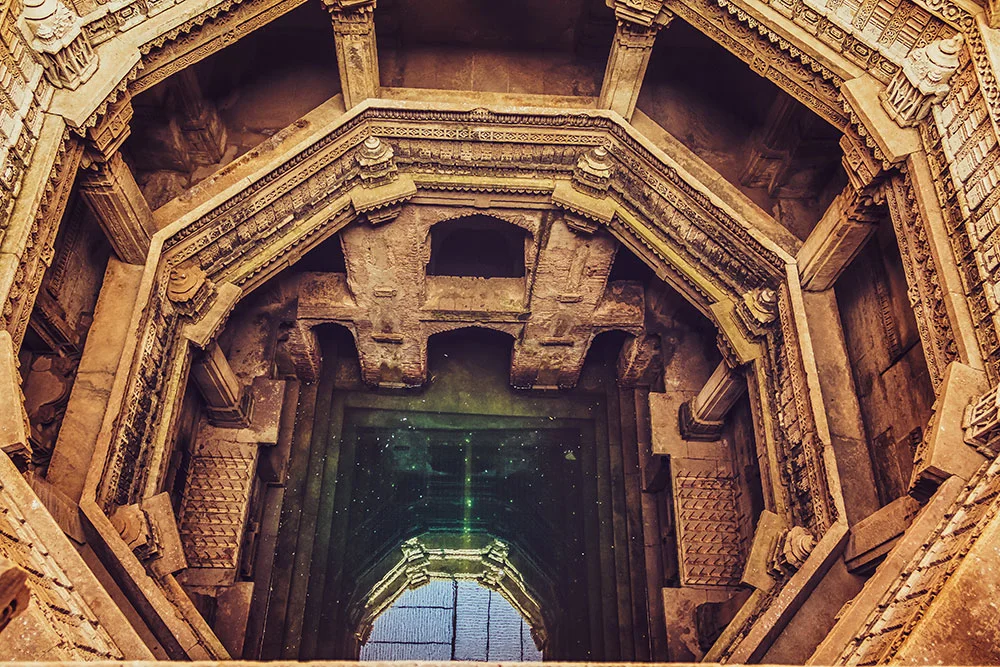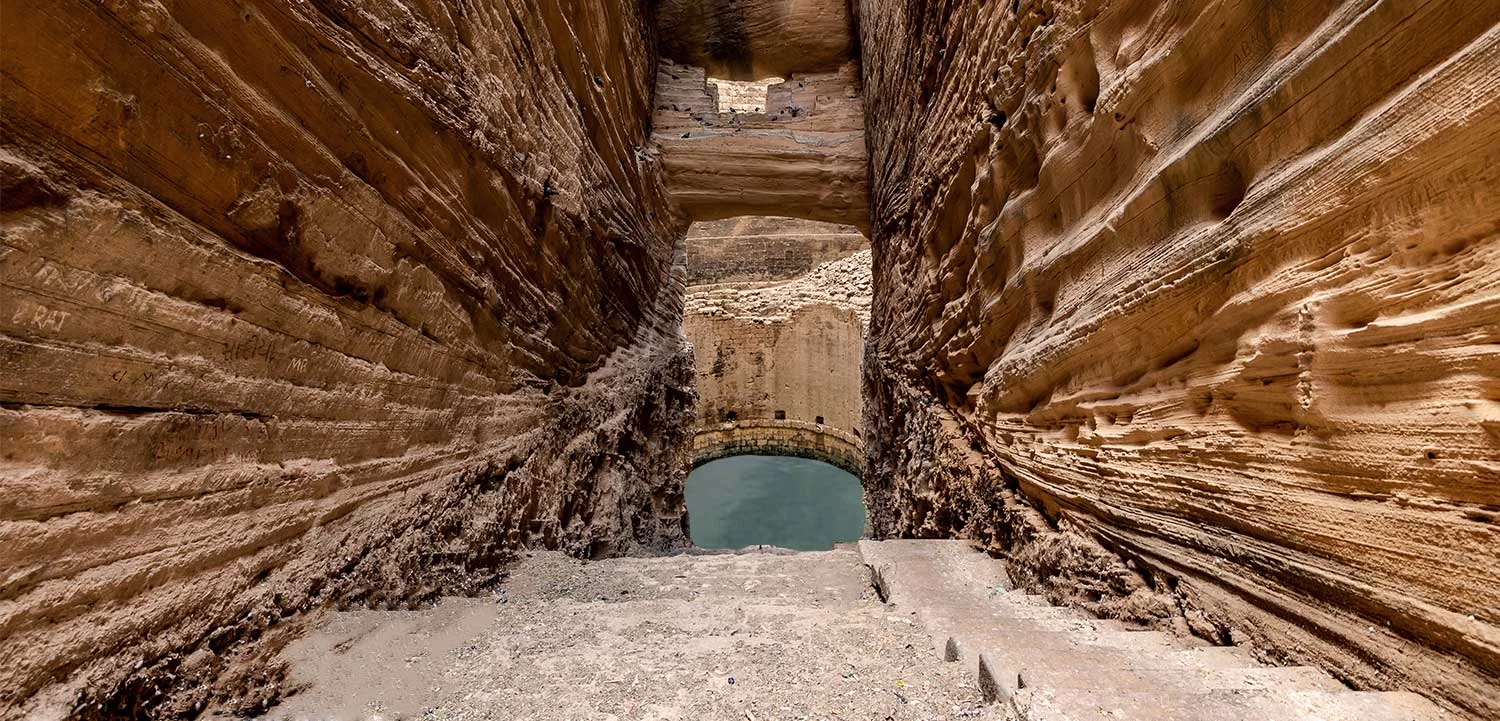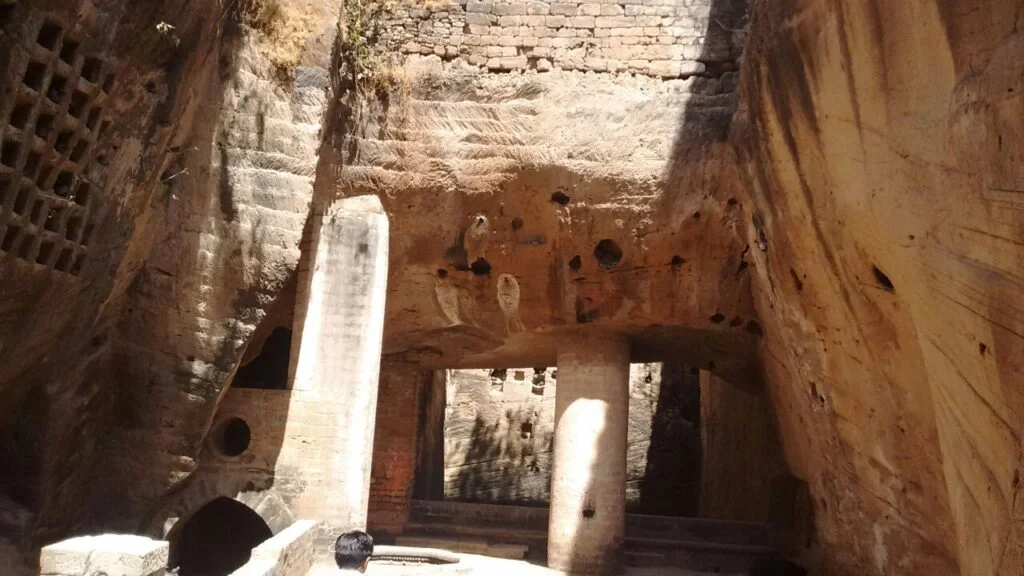Stepwells
Rani Ki Vav
The only real sign of Patan’s former glory is this astoundingly beautiful step-well. Located on the banks of the Saraswati River, this is one of the oldest and finest stepwells in Gujarat and is remarkably preserved. Steps lead down through multiple levels with lines of carved pillars and more than 800 sculptures, mostly on Vishnu-avatar themes, as well as striking geometric patterns. The stepwell is made in the form of an inverted temple.


Adalaj ni Vav
The flamboyant 15th-century stepwell, has lost only little of its grandeur over the last few centuries. Till date, the intricate carvings on the pillars that support the five storeys are mostly intact; the beams work as pit stops for pigeons flying in and out and the structure still leaves jaws dropped for swarms of people. The step-well represents the Indo-Islamic fusion architecture that percolated through the many stepwells of the period.
Adi-Kadi Vav
These two stepwells inside Uparkot, are highly unusual forms of stepwells, very different from wells in other parts of Gujarat. Most wells are dug through various kinds of subsoils and rock layers, and stone columns, floors, stairs and walls are built much like they would be in above-ground construction. In the case of these two, the spaces of the well itself were carved out of stone, leaving the structure of the well (the columns, the walls, etc.) out of the original rock.


Navghan Kuwo
These two stepwells inside Uparkot, are highly unusual forms of stepwells, very different from wells in other parts of Gujarat. Most wells are dug through various kinds of subsoils and rock layers, and stone columns, floors, stairs and walls are built much like they would be in above-ground construction. In the case of these two, the spaces of the well itself were carved out of stone, leaving the structure of the well (the columns, the walls, etc.) out of the original rock.
Bai Harir Ni Vav
Bai Harir ni Vav lies 15 km from the centre of Ahmedabad city. This step-well, built in 1499 under the supervisor of Sultan Begada’s harem, has steps down through five levels of carved stone columns to two small wells, now often bone dry. The depths are cool, even on the hottest day, and it’s a fascinating and eerie place. Overflow channels at the top are a reminder of times when water tables were much higher than today.
